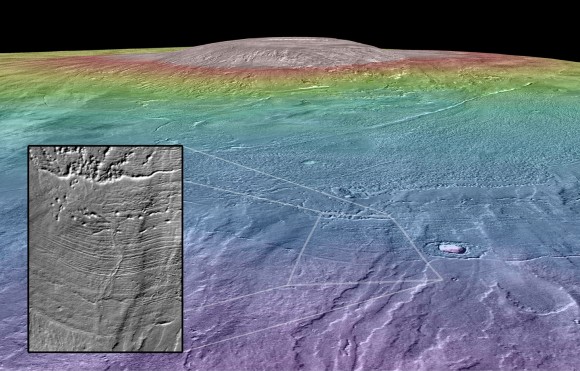| Online: | |
| Visits: | |
| Stories: |

| Story Views | |
| Now: | |
| Last Hour: | |
| Last 24 Hours: | |
| Total: | |
Did This Martian Volcano Once Host Life?

A false-color view of Arsia Mons on Mars, including braided fluvial channels (seen in inset) from glacial deposits made 210 million years ago. Credit: NASA/Goddard Space Flight Center/Arizona State University/Brown University
Extremophiles teach us that life is found in unlikely places, which is why after looking at microbes happily living in hot springs or surviving after 18 months in space, scientists are trying to expand our definition of what a habitable environment is. So perhaps this ancient Martian volcano would be an example.
Meet Arsia Mons. It’s the third-tallest volcano on the Red Planet and one of the largest volcanoes we know of in the solar system.
New research shows that a combination of eruptions and a glacier on its northwest side could have formed something called “englacial lakes”, which is water that is created inside glaciers. (The researchers compare this to “liquid bubbles in a half-frozen ice cube.”) These in sum would have been massive, on the order of hundreds of cubic miles.
(…)
Read the rest of Did This Martian Volcano Once Host Life? (345 words)
© Elizabeth Howell for Universe Today, 2014. |
Permalink |
No comment |
Post tags: englacial lakes, extremophiles, life beyond earth, mars reconnaissance orbiter
Feed enhanced by Better Feed from Ozh
Source: http://www.universetoday.com/112200/did-this-martian-volcano-once-host-life/



